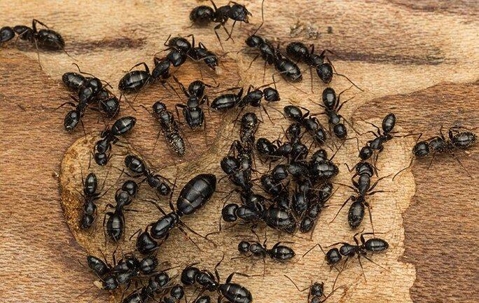When it comes to wood-boring pests, termites get all the attention. But other destructive insects commonly invade homes, too, like carpenter ants. Just like termites, carpenter ants can do major damage to your property, including that which leads to larger structural issues. Learning how to prevent such pests from invading your property will protect you from the damage they cause.
What Are Carpenter Ants?
They may look a whole lot like other common house ants -- small, black, and segmented -- but carpenter ants do something that other ants don’t do. They chew through dead or decaying wood, not to eat like termites do but to carve tunnels for their eggs. These wooden tunnels not only protect carpenter ant eggs from predators, but they also act as incubators that help keep them warm enough to hatch. But that also means that human homes provide them with plenty of real estate and warm temperatures for them to thrive. That’s what makes them such common invaders of properties.
What Attracts Carpenter Ants To Homes?
While their wood-boring is unique in the ant world, carpenter ants are attracted to homes for many of the same reasons as other pests. Unlike termites, carpenter ants don’t actually eat wood. They chew through it, sure, but they spit the pulpy processed wood out to strengthen their chambers. Instead, they scavenge for food just like other ants do, meaning carpenter ants are dual threats: they do damage and contaminate food sources. Here are some of the common foods that attract carpenter ants:
- Proteins: Carpenter ants will be attracted to protein-rich foods, like meats and cheeses, even pet food. This is why it’s crucial to not leave food out and keep it stored in secure areas.
- Honeydew: No, not the fruit, though sugary aromas of any kind can attract ants from far and wide. Instead, this term refers to the sugary secretion from aphids, a common garden pest.
- Dead insects: Carpenter ants aren’t hunters, but they will eat other insects if they are dead or weakened. The food chain of insects proves time and time again that the presence of one pest often begets another.
What Damage Do Carpenter Ants Cause?
Ants are so tiny that it can be hard to tell the subtle differences between species just by seeing one crawling around. Instead, the first and only sign people often get that their home has carpenter ants, specifically, is the damage they cause. Here are common signs of wood damage:
- Holes: Unlike termites, which typically stop short of the surface when they carve through woods, carpenter ants often bore straight into surface woods. If you notice visible holes in your walls or floors, it’s a sure sign of a pest other than termites.
- Frass: As they chew through woods, carpenter ants leave fine sawdust behind called frass. If you see piles or dustings of this around your home, call the pros immediately.
- Warping: As wood-boring pests eat through wood, they alter the surface tension and cause buckling or bulging. If you notice that wooden items appear suddenly warped, or if windows and doors seem to suddenly fit too tight or loose, the damage is likely serious.
Call The Experts Immediately
To avoid those serious types of damage, you have to take steps to control carpenter ants long before they even invade your home. To do that properly, you need the guidance of experts. At Connecticut Pest Elimination, our trained staff can provide you with tips and tricks for how to prevent ant infestations by removing the factors that attract them. We can get started on an inspection of your home right away, looking for any signs of existing pest problems. If damage is spotted, our proven solutions are the only thing that’s guaranteed to completely wipe carpenter ants out before they do serious damage.
Protect your home from wood-boring pests with superior protection from Connecticut Pest Elimination.
Complete the form below to get your free quote.

